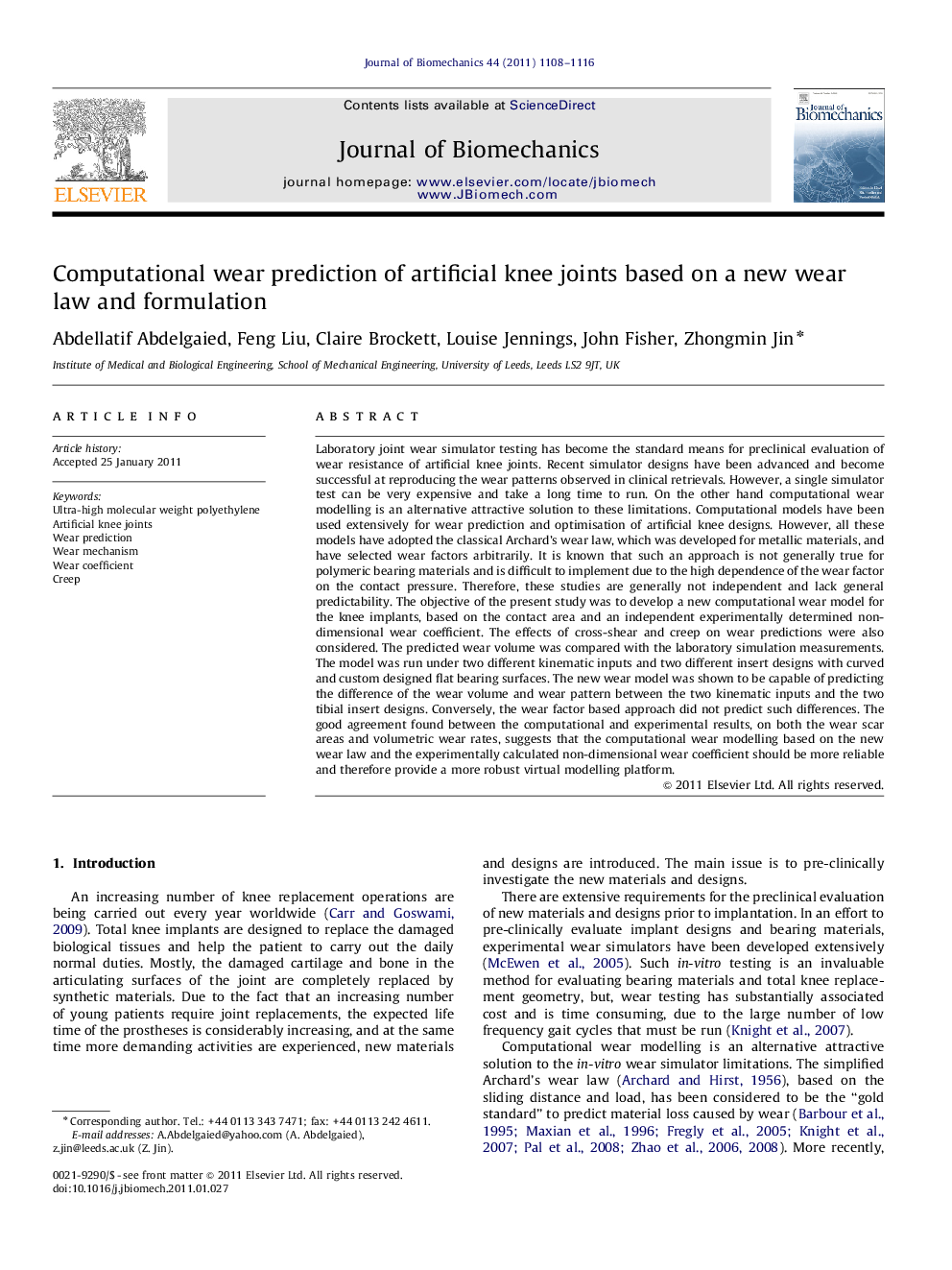| کد مقاله | کد نشریه | سال انتشار | مقاله انگلیسی | نسخه تمام متن |
|---|---|---|---|---|
| 10433369 | 910292 | 2011 | 9 صفحه PDF | دانلود رایگان |
عنوان انگلیسی مقاله ISI
Computational wear prediction of artificial knee joints based on a new wear law and formulation
دانلود مقاله + سفارش ترجمه
دانلود مقاله ISI انگلیسی
رایگان برای ایرانیان
کلمات کلیدی
موضوعات مرتبط
مهندسی و علوم پایه
سایر رشته های مهندسی
مهندسی پزشکی
پیش نمایش صفحه اول مقاله

چکیده انگلیسی
Laboratory joint wear simulator testing has become the standard means for preclinical evaluation of wear resistance of artificial knee joints. Recent simulator designs have been advanced and become successful at reproducing the wear patterns observed in clinical retrievals. However, a single simulator test can be very expensive and take a long time to run. On the other hand computational wear modelling is an alternative attractive solution to these limitations. Computational models have been used extensively for wear prediction and optimisation of artificial knee designs. However, all these models have adopted the classical Archard's wear law, which was developed for metallic materials, and have selected wear factors arbitrarily. It is known that such an approach is not generally true for polymeric bearing materials and is difficult to implement due to the high dependence of the wear factor on the contact pressure. Therefore, these studies are generally not independent and lack general predictability. The objective of the present study was to develop a new computational wear model for the knee implants, based on the contact area and an independent experimentally determined non-dimensional wear coefficient. The effects of cross-shear and creep on wear predictions were also considered. The predicted wear volume was compared with the laboratory simulation measurements. The model was run under two different kinematic inputs and two different insert designs with curved and custom designed flat bearing surfaces. The new wear model was shown to be capable of predicting the difference of the wear volume and wear pattern between the two kinematic inputs and the two tibial insert designs. Conversely, the wear factor based approach did not predict such differences. The good agreement found between the computational and experimental results, on both the wear scar areas and volumetric wear rates, suggests that the computational wear modelling based on the new wear law and the experimentally calculated non-dimensional wear coefficient should be more reliable and therefore provide a more robust virtual modelling platform.
ناشر
Database: Elsevier - ScienceDirect (ساینس دایرکت)
Journal: Journal of Biomechanics - Volume 44, Issue 6, 7 April 2011, Pages 1108-1116
Journal: Journal of Biomechanics - Volume 44, Issue 6, 7 April 2011, Pages 1108-1116
نویسندگان
Abdellatif Abdelgaied, Feng Liu, Claire Brockett, Louise Jennings, John Fisher, Zhongmin Jin,